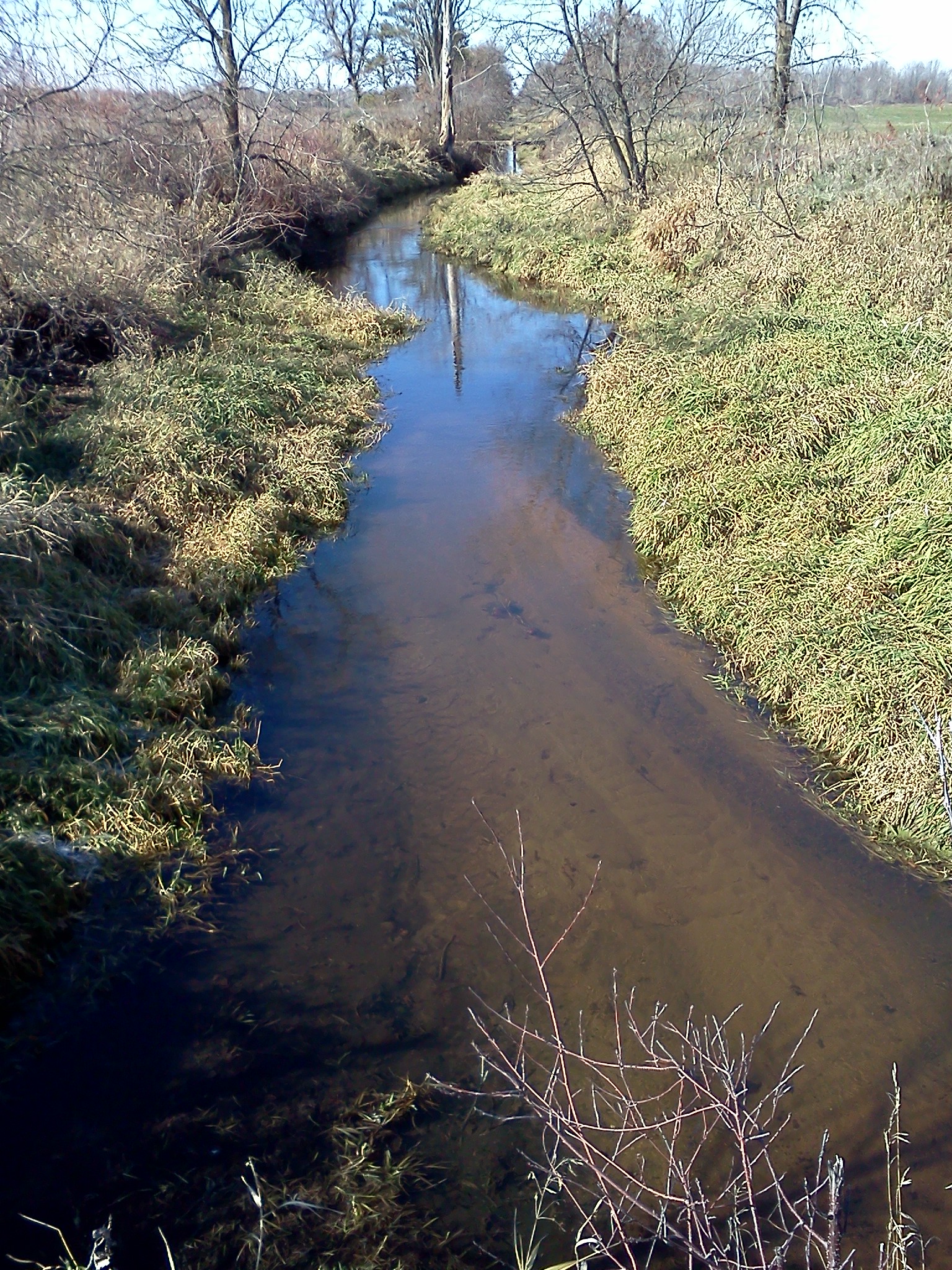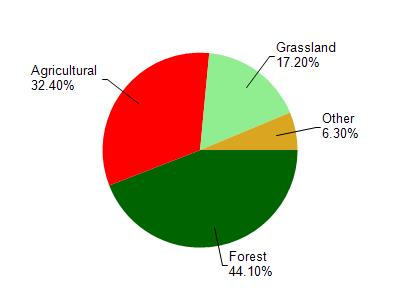
4.24 Miles
6.94 - 11.18
Coldwater
2023
Poor
Elevated Water Temperature
Unknown Pollutant
Portage
Yes
Yes
Yes
Fish and Aquatic Life
Overview
The South Branch of Ten-mile Creek/Ditch No. 6, 11 miles long is classified as Class I (mile 4.4 - 11.2) and II (mile 0 - 4.4) trout water. Mile 6.9 - 11.2 is condsidered an Exceptional Resource Water. The lower eight miles was ditched in the early 1900’s to drain the land for agricultural use. This portion of the stream is dredged periodically to remove sediment and vegetation from the channel. Other impacts to the stream include heavy irrigation, which reduces base-flow, pesticide use, streambank pasturing and sedimentation from wind erosion.
In-stream cover is poor on 60 percent of the creek. Stream habitat work would benefit the stream but cost is prohibitive. Old "V-type" deflectors are still in place but are causing more harms than good by acting as dams.
Date 2002
Author Aquatic Biologist
General Condition
The South Branch of Tenmile Creek (also know as Ditch No. 6) was assessed during the 2018 listing cycle; new temperature sample data were clearly below the 2018 WisCALM listing thresholds for the Fish and Aquatic Life use. This water was meeting this designated use and was not considered impaired.
Date 2017
Author Ashley Beranek
Impaired Waters
The 2018 assessments of the South Branch Tenmile Creek (Tower Rd to the headwaters) showed impairment by temperature; new temperature sample data exceeded the 2018 WisCALM listing criteria for the Fish and Aquatic Life use. Based on the most updated information, this water was proposed for the impaired waters list.
Date 2017
Author Ashley Beranek
Condition
Wisconsin has over 84,000 miles of streams, 15,000 lakes and milllions of acres of wetlands. Assessing the condition of this vast amount of water is challenging. The state's water monitoring program uses a media-based, cross-program approach to analyze water condition. An updated monitoring strategy (2015-2020) is now available. Compliance with Clean Water Act fishable, swimmable standards are located in the Executive Summary of Water Condition in 2018. See also the 'monitoring and projects' tab.
Reports
Recommendations
Monitor Targeted Area
The purpose of this project is to evaluate dredging practices on Ditch 6 in the Portage County Drainage District. This ditch is a coldwater trout stream with excellent reproduction. The Drainage district is excavating/dredging as part of maintenance. There is some evidence that this dredging is having adverse impacts.
Management Goals
Wisconsin's Water Quality Standards provide qualitative and quantitative goals for waters that are protective of Fishable, Swimmable conditions [Learn more]. Waters that do not meet water quality standards are considered impaired and restoration actions are planned and carried out until the water is once again fishable and swimmable
Management goals can include creation or implementation of a Total Maximum Daily Load analysis, a Nine Key Element Plan, or other restoration work, education and outreach and more. If specific recommendations exist for this water, they will be displayed below online.
Monitoring
Monitoring the condition of a river, stream, or lake includes gathering physical, chemical, biological, and habitat data. Comprehensive studies often gather all these parameters in great detail, while lighter assessment events will involve sampling physical, chemical and biological data such as macroinvertebrates. Aquatic macroinvertebrates and fish communities integrate watershed or catchment condition, providing great insight into overall ecosystem health. Chemical and habitat parameters tell researchers more about human induced problems including contaminated runoff, point source dischargers, or habitat issues that foster or limit the potential of aquatic communities to thrive in a given area. Wisconsin's Water Monitoring Strategy was recenty updated.
Grants and Management Projects
Monitoring Projects
| WBIC | Official Waterbody Name | Station ID | Station Name | Earliest Fieldwork Date | Latest Fieldwork Date | View Station | View Data |
|---|
| 1383200 | South Branch Tenmile Creek | 10009196 | South Branch Tenmile Creek - Taft Rd (Site 7) | 5/5/1998 | 8/30/2023 | Map | Data |
| 1383200 | South Branch Tenmile Creek | 10031975 | South Branch of Tenmile Cr at Central Sands Rd | 12/15/1999 | 6/4/2001 | Map | Data |
|

Watershed Characteristics
South Branch Tenmile Creek is located in the Sevenmile and Tenmile Creeks watershed which is 112.24 mi². Land use in the watershed is primarily forest (44.10%), agricultural (32.40%) and a mix of grassland (17.20%) and other uses (6.30%). This watershed has stream miles, lake acres and 10,480.58 wetland acres.
Nonpoint Source Characteristics
This watershed is ranked High for runoff impacts on streams, Low for runoff impacts on lakes and High for runoff impacts on groundwater and therefore has an overall rank of High. This value can be used in ranking the watershed or individual waterbodies for grant funding under state and county programs.However, all waters are affected by diffuse pollutant sources regardless of initial water quality. Applications for specific runoff projects under state or county grant programs may be pursued. For more information, go to surface water program grants.
South Branch Tenmile Creek is considered a Coldwater under the state's Natural Community Determinations.
Natural communities (stream and lake natural communities) represent model results and DNR staff valiation processes that confirm or update predicted conditions based on flow and temperature modeling from historic and current landscape features and related variables. Predicated flow and temperatures for waters are associated predicated fish assemblages (communities). Biologists evaluate the model results against current survey data to determine if the modeled results are corect and whether biological indicators show water quaity degradation. This analysis is a core component of the state's resource management framework. Wisconsin's Riverine Natural Communities.